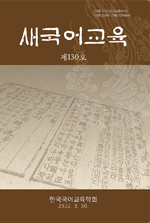漢-韓 어휘 비교에서, 上古漢語(한자의 중국 상고음)와 한국 고유어가 서로 대응하는 매우 특이한 대응 현상이 다수 발견되는데, 이들은 일반적인 借用과도 뚜렷이 구별된다. 예컨대, 上古汉语 [*khrɯds](器)(鄭張尙芳 2003:439)와 한국 고유어 [kïrït](器그릇)의 관계가 그것이다. 이런 대응에 대해, 어떤 이는 “우연의 일치”로, 또 어떤 이는 유의미한 “上古 시기의 차용관계”로 설명하기도 한다. 필자의 연구(2004,2007,2008)에 의하면 이들은 결코 고립된 예로 존재하지 않고 심지어 諧声 체계 내에서 집단 체계적으로 대응하는데, 이는 바로 이들이 우연이 아님을 나타내주는 것이다. 본 논문은 우선 ≪说文≫ “秋声”系 字의 汉韩(알타이제어) 对应 예를 살피고, 이들을 통해 유관 “汉韩(알타이제어)準同源어군”을 재구해 보았다. 끝으로 이들 자료를 통해 “秋声”系 자들이 한국어 조어(알타이조어)를 바탕으로 창제되었음을 증명하고자 했다. 본 논문의 주요 내용은 아래와 같다.
It’s worth noticing that some corresponding phenomena between Archaic Chinese and Korean inherence words. Such as the relation between Archaic Chinese [*khrɯds](器) (Zheng zhang, Sang-fang 2003) and Korean [kïrït](vessel). According to my previous research (Oh,Se-jun 2004,2007,2008),these relative words do not exist lonely, while they correspond in the Phonetic Radical System(諧聲) collectively and systematically. This means that their relationship is by no means fortuitous coincidence. According to our study, these correspondences are not loanwords, they represent “Semi-Cognate Words of Archaic Chinese and Altai”. This thesis mainly discusses related “Semi-Cognate Words of Archaic Chinese and Altai” from the Chinese-Korean corresponding materials of ≪SHUO WEN JIE ZI(说文解字)≫ “秋” Phonetic Radicals. Finally it attempts to prove that the Characters of “秋” Phonetic Radicals are created according on Proto-Altai (Proto-Korean). The main content of this paper is as following:Firstly, there are close correspondences between Archaic Chinese Phonology of “秋” Phonetic Radicals and Inherence Korean(Medieval Korean-MK). Secondly, it reconstructs several so-called “Semi-Cognate Words of Archaic Chinese and Altai” based on these Chinese-Korean corresponding materials. Thirdly, it finally discusses the creation theory of Proto-Altai’s “秋” Phonetic Radicals through these argumentations.
1. 서론
2. “秋聲”系字 漢-韓 대응
3. “漢-韓準同源어군”의 재구와 “秋聲”系字 창제
4. 餘論
5. 結論
